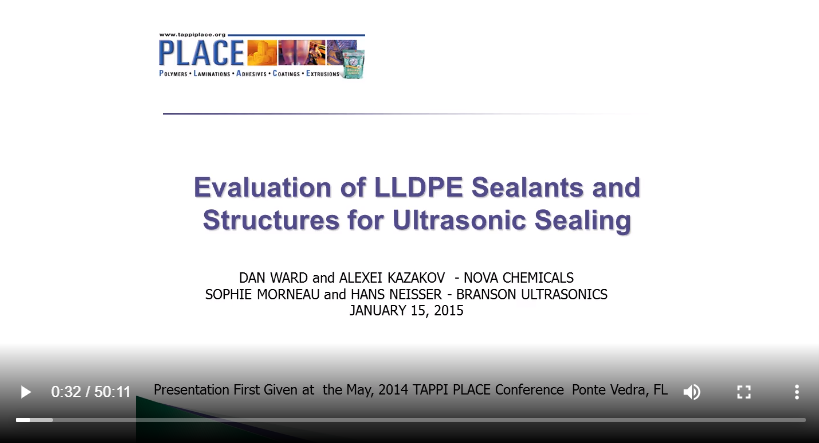 Evaluation of LLDPE Sealants and Structures for Ultrasonic Sealing
Evaluation of LLDPE Sealants and Structures for Ultrasonic Sealing
Ultrasonic sealing is an emerging technology that offers potential cost savings to flexible packaging converters through increased line speeds, narrower seals and reduced leakers due to seal area contamination. Most polyethylenes, coextruded films or laminates that can be conductive or heat sealed can also be ultrasonically welded. However, the mechanical forces required in ultrasonic sealing can also weaken films as certain polymers flow out of the seal area and/or fracture due to localized stresses. The amount of flow or weakening varies by polymer type and can be controlled by optimizing sealing parameters for specific multilayer film structures and sealants.
This study evaluated the effects of ultrasonic sealing parameters and basic polyethylene characteristics on package integrity using coex films with various polyethylene sealants. The results suggest that polyethylenes with a relatively broad molecular weight distribution, high toughness and low zero shear viscosity are desirable for maintaining integrity in the ultrasonic seal area. The ultrasonic sealing conditions can be optimized for specific PE sealants and/or coex film structures by determining the threshold energy required to form a seal for a given film and maintaining levels slightly above that level.
Presented by: Dan Ward, Technical Service and Application Development Specialist with the Flexible Products Group at NOVA Chemicals Corporation, Alexei Kazakov, Downstream Market Research Specialist, NOVA Chemicals Corporation, Sophie Morneau, Director, ATG Applications & Tooling Engineering, Branson Ultrasonics Corp. and Hans Neisser, Market Segment Manager, Packaging, Branson Ultrasonics Corp. (Running time: 50 minutes)

